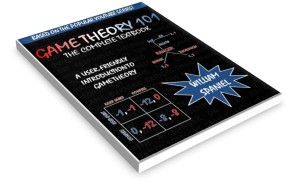In the previous unit, we examined simple games where both players chose their strategies simultaneously. However, in many strategic contexts, players observe their opponents’ moves before making their own. We call such interactions extensive form games. This lecture introduces such games and the new solution concept we use to solve them.
Takeaway Points
- Strategies from Nash equilibria allow players to take actions that they would not actually want to do when it is time for them to implement those actions.
- It is reasonable to require that players maximize their rewards based off of what they can still obtain. As such, not all Nash equilibria are sensible in extensive form games.
- Subgame perfect equilibrium refines the concept of Nash equilibrium accordingly. A set of strategies is a subgame perfect equilibrium if the strategies within it form Nash equilibria in all subgames of the overall game. We will focus on it in this unit.
- The key difference between subgame perfect equilibrium and Nash equilibrium is that subgame perfect equilibrium require that all threats are credible. Consequently, the study of subgame perfect equilibrium is the study of credible threats.
- Subgame perfect equilibria are a subset of Nash equilibria. That is, a subgame perfect equilibrium is a Nash equilibrium. But a Nash equilibrium may or may not be a subgame perfect equilibrium.

